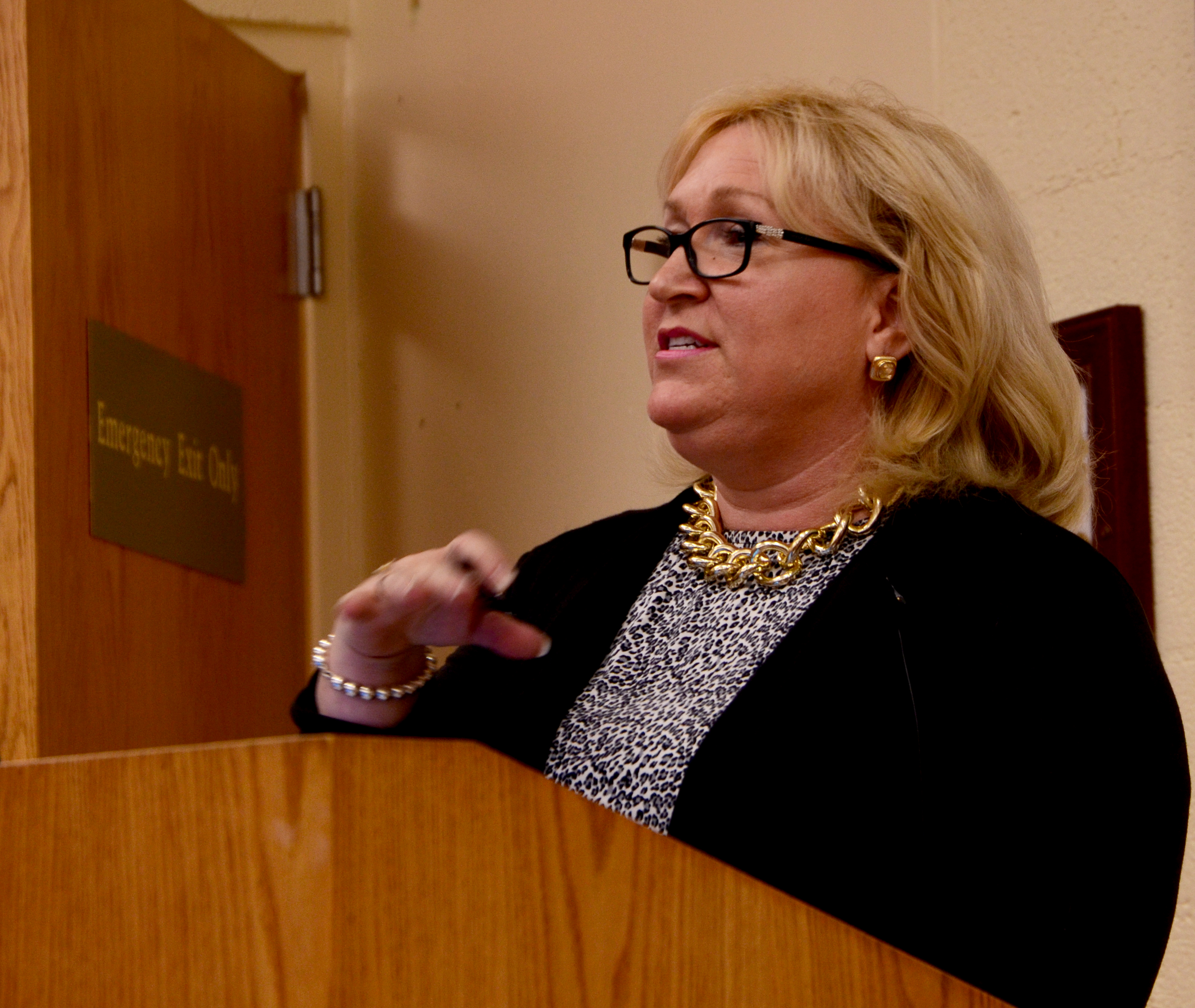“I love CEREC technology!” Kathy Jendrasik-Savitsky DMD 94 Shares Her Story of Running a Digital Private Dental Practice

Boston University Henry M. Goldman School of Dental Medicine (GSDM) is at the forefront of a digital dentistry revolution, and its alumni—present and future—are poised to lead it. Trained at GSDM, Kathy Jendrasik-Savitsky DMD 94 has been practicing digital dentistry in her private practice since 2009. On Thursday, September 18, 2014, she gave a lunch and learn presentation about how she has integrated digital dentistry into her everyday practice and now runs a digital practice.
Dr. Jendrasik-Savitsky’s relationship with CEREC began when she was a student at GSDM from 1990 to 1994. At that time, the School had an esthetics lab on the 7th floor. It was here that she was introduced to the then relatively new CEREC technology under the tutelage of the now retired Clinical Associate Professor of General Dentistry Dr. Nargess Ashayeri.
“CEREC technology has been around for over 25 years,” Dr. Jendrasik-Savitsky said. “It’s not new technology, and it only continues to advance the possibilities of what a dentist can do all day. It has proven its longevity.”
She reports that the use of CEREC technology in her practice has improved her day-to-day clinical work by allowing her to solve problems quickly and on the spot, rather than having to undergo lengthy discussions with a prosthetics lab over the phone. “I have completely eliminated re-dos, goopy, misread impressions, and temporary crowns falling out.” she said. “A patient comes in to see me for a crown and it’s done while they wait—within about an hour and a half from preparation to cementation.”
Her patients love CEREC technology. Not only do they get their crown on the day of their appointment, but they actually get to see it being milled. Several of her patients have videotaped their crowns being made and have posted the videos on Facebook. “Plus,” she says, “CEREC technology lets the patient see that reinvesting in my practice is an investment in them.”
For practitioners considering investing in CEREC units for their offices, she says a good guideline to know when it is financially worthwhile is when they are making about seven crowns a month. “Their lab bill at that point would be about equivalent to what their CEREC purchase bill would be,” she says.
With experience comes mastery, something Dr. Jendrasik-Savitsky certainly has attained. She has spent countless hours working with CEREC technology, and has learned several valuable techniques along the way that help her streamline the process and avoid embarrassing delays. “Know your materials,” she recommends. “Teeth and blocks come in many shapes and sizes. You will need to make sure you have a wide range of sizes and extra-long blocks to cover all the shapes and sizes of teeth that you may see in your office. It can be a very stressful situation if you are ready to mill your crown and you realize then that you don’t have the proper size block.”
Dr. Jendrasik-Savitsky also advised students to master the art of polishing their crowns—both in the lab and intraorally. “You will polish crowns in the lab before you deliver them to your patient,” she said. “However, a patient may need a slight adjustment after you have cemented it in. After you reduce a crown, it will need to be repolished; but this time it’s already in the mouth. Having a nice assortment of intraoral polishers will ensure your patient will love their final crown.”
“The use of CEREC makes dentistry very exciting and patients appreciate it,” she says. “I am so thankful that Boston University taught me this technology over 20 years ago. I’m also proud that the dental school continues to push the envelope of what excellent dentistry really means. I am so proud of my affiliation with such an excellent institution! I love being a dentist and I love CEREC technology!”
Dr. Jendrasik-Savitsky practices dentistry in Charlotte, North Carolina.